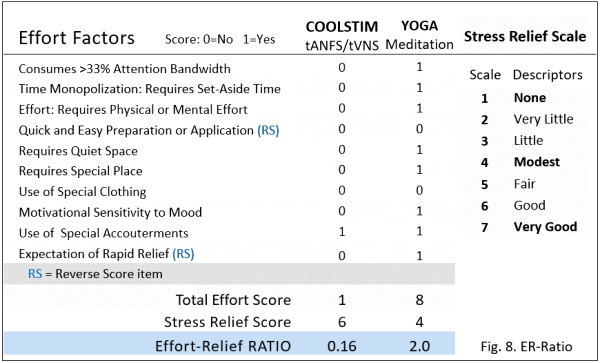About StimLogic & COOLSTIM
StimLogic Inc is an advanced Neurotechnology company that designs, develops and manufactures noninvasive transdermal and minimally invasive percutaneous neurostimulation devices for human and veterinary healthcare practitioners, health conscious consumers and their dogs, cats, horses and other mammals –– www.iPetStim.com.
COOLSTIM® is a Registered Trademark of StimLogic.
We are Personal HealthCare & SelfCare Innovators
We are dedicated to developing personal healthcare (Self-Health) products with medical-grade therapeutics, optimized for availability and accessibility, setting new standards for usability, accessibility and user-readiness.
 Jonathan M. Honeycutt, Ph.D., MPA, MPS, RCP
Jonathan M. Honeycutt, Ph.D., MPA, MPS, RCP
CEO, Chief Science Officer
A clinical, forensic psychologist and neuropsychologist, Dr. Honeycutt previously co-founded the Center for Psychology in the Public Interest and Decision Sciences, a trial consulting firm where he developed JURYZOOM, a web-based decision forecasting platform which helped his clients win over $2.5 Billion in jury awards. Dr. Honeycutt is credited with pioneering transdermal electromagnetic stimulation of the auricular nerve field.
After earning bacalaureate and masters degrees from the University of Colorado, Dr. Honeycutt earned a second masters degree at National University and his PHD at the Graduate School of Professional Psychology, with an internship at the University of Arizona Health Sciences Medical Center.
Dr. Honeycutt’s personal neurotechnology journey began when he suffered a painful neurological injury and started experimenting with neurostimulation. He experienced rapid healing using one StimLogic’s earliest COOLSTIM prototypes. Since then, Dr. Honeycutt has made it his personal mission to make the world’s most user-friendly neurostimulation systems accessible to everyone who needs stress relief and drug-free, anti-inflammatory therapy at an affordable price. In his free time, Dr. Honeycutt plays fingerstyle guitar and enjoys hiking and kayaking in the Pacific Northwest. Remarkably, after 6 months of using COOLSTIM, Dr. Honeycutt experienced a sudden, breakthrough advancement in guitar skills. “I hadn’t learned anything new in nearly 30 years and I suddenly found myself composing completely new work – masterpieces – and playing like I never could before.” – Musicians Take Note. DARPA has been studying Vagus Nerve Stim (accelerated learning applications) for over 10 years. Learning effects have been reported for motivational enhancement, attention, focus, memory, and mood.
Dr. Honeycutt is board certified in clinical psychology (Western Austrialia), applied psychophysiology, and respiratory care. Before developing COOLSTIM and founding StimLogic, he accumulated broad clinical experience in hospital settings: ER departments, critical care units, cardiac intensive care, oncology, cardiopulmonary, clinical psychology, sleep and behavioral medicine. These experiences provided new perspectives about how people interact with healthcare devices and technologies.
Dr. Honeycutt’s experience led to key insights about how cognitive and neurological heuristics (e.g., the availability-bias) determine users’ acceptance and use of self-administered therapies and therapeutic technologies. These became the building blocks of StimLogic’s Usability-Availability metrics which inform the design and development of StimLogic’s Self-Health devices. (More information below.)
Thomas A. LaRovere, Engineer, Vice President, CTO
Tom has over thirty years of experience in engineering, and business management, and has a proven track record in business formation, marketing, sales and the development of innovative production and process systems incorporating advanced materials and electronic technologies.
A sample of Tom’s technology development expertise includes deep sea electronics, oil well robotics, pharmaceutical packaging, semiconductors and circuit boards used in space. His career has included working with dozens of Fortune 500 companies as well as well as assisting start-up companies. Tom founded and managed one of the first robotic systems integration companies in the US and pioneered applications involving distributed computer control over the internet, touchscreens and machine vision integration with mechatronics. Tom’s interest in neurotechnologies stems from family-member physicians and nurses who have firsthand experience with neurological disorders as both practitioners and patients.
Tom earned a Bachelor of Science in Electrical and Electronics Engineering from California Polytechnic University. Tom is an avid equestrian, sailor and world traveler.
Advisory Board
Charles Vorwaller, CEO, Aspen Laser, TheraLight
Joseph Colombo, Ph.D. , Director of Autonomic Research, Drexel University
Lisa Saff-Koche, MD
Marcelo Valio, MD
Pavel Lebedev
Life Integrated Design: Designed for Living
CoolStim has been designed and developed as a Life-Integrated healthcare product − a therapy system so easy and compelling to use that you’ll want to use it and, through continued use, experience the full benefits of the remarkable new therapeutic modality called Vagus Nerve Stimulation.
Behavioral Economics: StimLogic’s Proprietary Usability Metrics
Much of human behavior is determined by what is most convenient, quick, and easy to accomplish. Effective tools or methods often go unused due to effort, inconvenience, attention-use and other requirements. Behavioral economics explains why drugs and alcohol remain the preferred methods of stress relief. They are effective, quick and effortless to use, and exert few other requirements.
Cracking the Usability-Availability Code: The Effort-to-Relief Ratio
Usability and the likelihood of use can be predicted by the Effort-to-Relief Ratio developed by Dr. Honeycutt as a design benchmark in the development of COOLSTIM.
Self-treatment enlists the user as the initiator, provider and receiver of therapy, invoking motivational and psychological factors called availability. Availability refers to a bias to think, feel, or behave created by learning and past experience which form memories, neural pathways and synaptic circuits that neurologically valence or potentiate thoughts, feelings (e.g., urgency, stress) and behavior (i.e., using stress relief methods or devices). Our availability biases are valenced by perceived usability, and access and barriers to use, as follows:.
NEURODYNAMIC Availability: The speed of neurological action and efficacy in relieving stress.
BEHAVIORAL Availability: Refers to barriers to obtaining, performing, using, consuming, etc. Fewer and/or lower behavioral barriers, including low effort, increases the probability of continued use (PCU).
COGNITIVE Availability: Refers to familiarity gained through experience and learning, and additionally includes usability and known barriers to use. Substances are familiar to the addicted. Barriers to obtaining and using substances are known, low and easily negotiated.
EMOTIONAL Availability: Mood affects perceptions of availability. Acute stress creates a negative mood that renders addicteds less likely (less motivated) to engage in effortful activities to relieve stress. A solution with less mood sensitivity and requiring only minimal effort is more likely to be used during times of acute stress.
CONCURRENT Availability: Addresses rationalizations for noncompliance due to the time it takes to use a substitute and/or to obtain relief from acute stress. A stress-relief substitute requiring minimal time and which avoids monopolizing time and attention is more likely to be used.
Conventional stress relief methods (CSRMs) like yoga, meditation, and mindfulness have low availability and high Effort-to-Relief Ratios, preventing many people from using them due to the required effort, set-aside time, monopolization of attention, need for mood congruence, a special quiet place, etc.
EFFORT-TO-RELIEF RATIO
COOLSTIM’s ER-Ratio is 12 times lower than conventional stress relief methods, i.e., yoga, meditation, mindfulness, etc.
A key factor in the Usability-Availability equation is the user’s expectation of rapid relief which COOLSTIM (but not CSRMs) creates via the instant physical sensation of stimulation and its rapid neurological action. Functional MRI (fMRI) studies have repeatedly demonstrated almost instantaneous vagus transmission through the brain’s NTS and locus coreleus and wide spread neural activations across key brain centers.
Instantaneous transmission of Vagus Stimulation provides an unparalleled level of neurological, psychological, emotional and behavioral availability, and – for a wide variety of stress disorders – virtually INSTANTANEOUS RELIEF.
COOLSTIM’s minimal ER-Ratio – effortlessness, context-inclusiveness, low attention use, and low motivational sensitivity to “being in-the-mood” – is comparable to drugs and alcohol, making it an ideal Anti-Relapse Therapy for addiction stress. COOLSTIM set-up requires a mere 30 to 60 seconds. ꟷ A true, life-centric, Set-up & Live solution.
Life-Compatible Therapy
CoolStim has been designed not only to be fast and easy to use but, more importantly, designed to encourage and facilitate use, especially for people with little time and opportunity to integrate a daily therapy into their busy lives.
